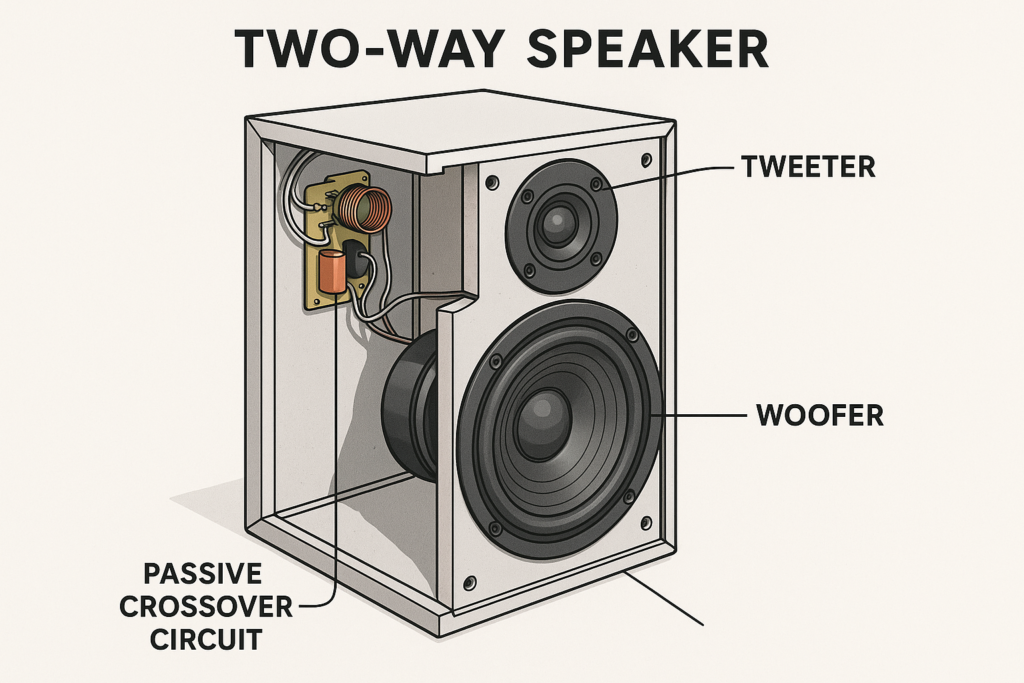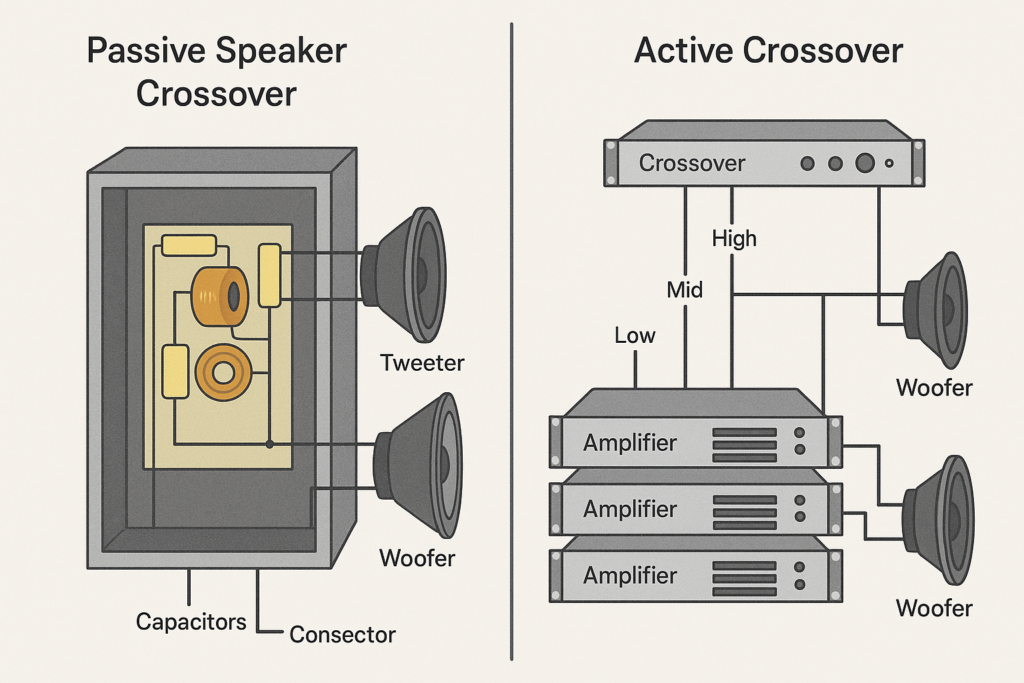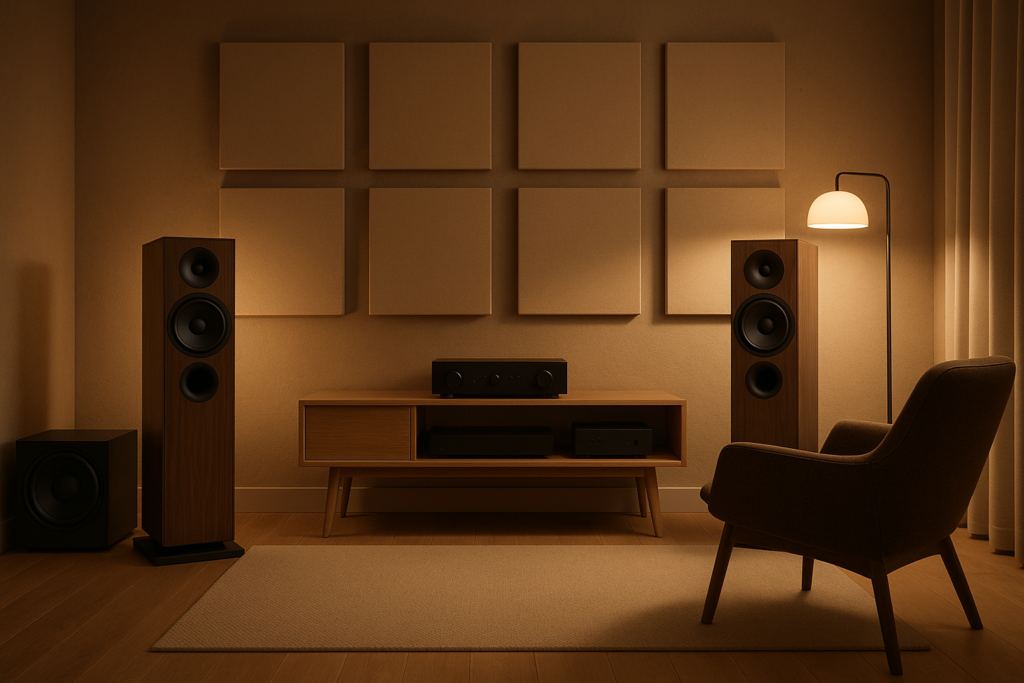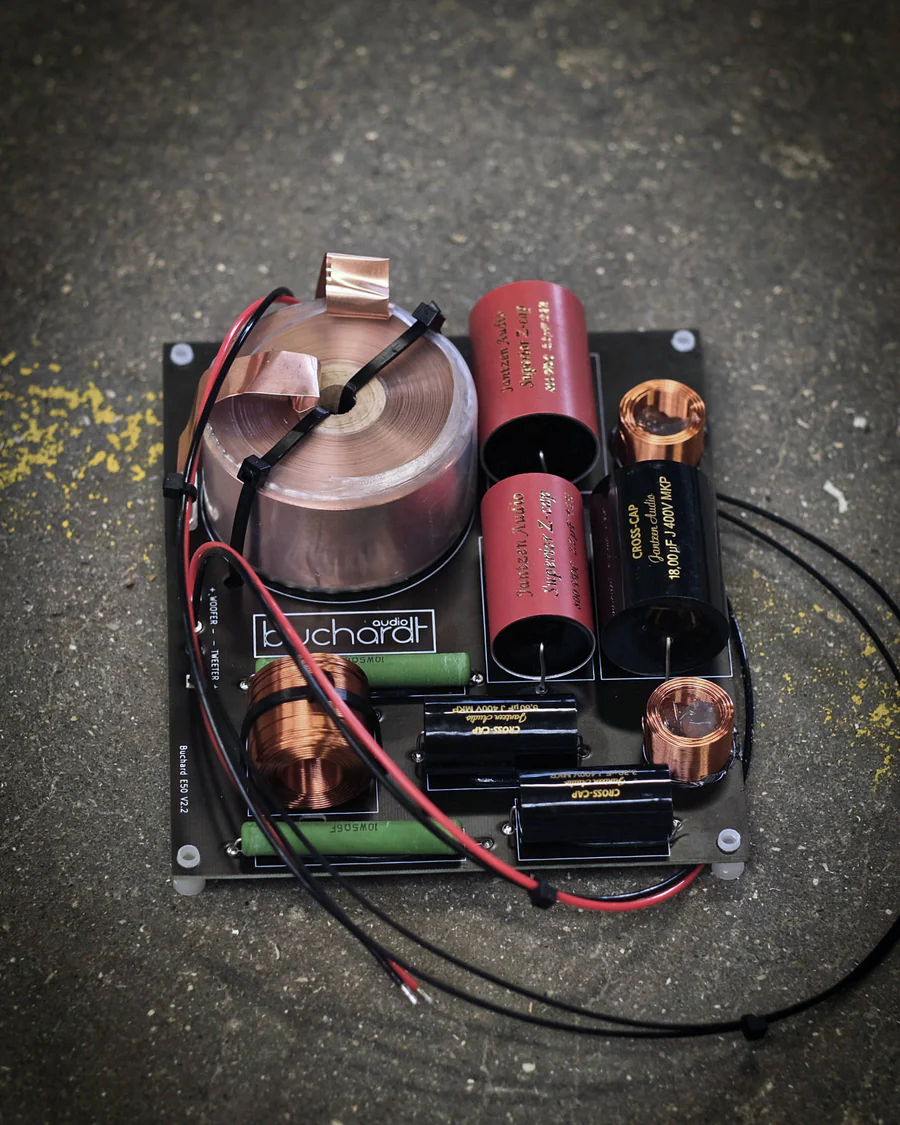When you’re looking to buy a new speaker, you’ll often come across the term crossover frequency. This is an important aspect of your speaker that greatly affects your listening experience, and understanding crossover frequencies is crucial to optimizing your system’s performance.
So what exactly is a crossover frequency? Why does it matter? And how do you optimize it for your setup?
In this article, we’ll break down what crossover frequencies are, how they work, why they matter, and how to set them up properly.
What Is Crossover Frequency?
A crossover frequency is the point where an audio signal is split between two or more speakers or drivers, typically between a woofer (for lows), a midrange driver, and a tweeter (for highs). The goal is to ensure that each driver only handles the frequencies it was designed for, improving overall clarity and efficiency.

For example, in a typical two-way speaker:
- Frequencies below the crossover point are sent to the woofer
- Frequencies above are sent to the tweeter
Different drivers are physically optimized for different frequency ranges:
Tweeters: Small, fast, built for treble (typically 2 kHz to 20 kHz)
Midrange drivers: Cover vocals and instruments (roughly 250 Hz to 2 kHz)
Woofers: Larger, built to move more air for bass (40 Hz to 250 Hz)
Subwoofers: Handle deep bass (20 Hz to ~120 Hz)
The crossover ensures that all parts of the signal go to the correct section for the best sound and performance.
Types of Crossovers: Active vs. Passive
Passive Crossovers
Found inside most speakers, these are analog filters made of capacitors, inductors, and resistors. They’re designed by the speaker manufacturer and require no power source. Passive crossovers split the signal after the amplifier.
- Pros: No need for external power, usually built-in
- Cons: Less flexible, fixed crossover points
Most bookshelf and floorstanding speakers use passive crossovers.

Active Crossovers
Used in more advanced setups, these split the signal before amplification. You’ll need separate amps for each frequency band, but the control and precision are significantly higher.
- Pros: Adjustable crossover points, better control
- Cons: More expensive and complex setup
Common Crossover Frequency Ranges
Here are some general guidelines for where crossovers typically occur:
| Driver Type | Frequency Range |
| Subwoofer | 20 Hz – 80/120 Hz |
| Woofer/Midrange | 80 Hz – 2,000 Hz |
| Tweeter | 2,000 Hz – 20,000 Hz |
For most home theater systems, a crossover frequency around 80 Hz is a standard starting point, especially when pairing speakers with a subwoofer.
Why Crossover Frequencies Matter
Setting the right crossover frequency ensures:
- Cleaner Sound: Each driver only plays what it’s good at, minimizing distortion.
- Better Power Handling: Prevents small drivers from trying to reproduce bass they can’t handle.
- Improved Imaging and Clarity: Especially important for music with lots of detail.
Setting the Right Crossover in Your System
1. Check the Speaker Specs
Look for the frequency response range. The lower end of your main speakers’ frequency response can help guide where to set the crossover.
Example: If your speakers are rated down to 60 Hz, set the crossover around 70–80 Hz.
2. Use Your Receiver or Processor’s Bass Management
Modern AVRs let you manually set crossover points per channel. Start with 80 Hz for satellites and adjust depending on your setup.
3. Consider Room Acoustics
A sub may technically play down to 20 Hz, but room modes and positioning will affect real-world performance. Use measurements if you can (e.g., Audyssey, Dirac).

Low-Pass vs. High-Pass Crossovers
- Low-Pass Filter: Allows low frequencies to pass through (used for subs).
- High-Pass Filter: Allows high frequencies to pass (used for satellites/tweeters).
In systems with a subwoofer, a low-pass filter is typically applied to the sub at the crossover point, while a high-pass filter is applied to the main speakers.
Crossover Slopes: How Steep is the Cutoff?
The slope determines how fast frequencies roll off past the crossover point. Measured in decibels per octave (dB/octave), common slopes include:
- 12 dB/octave (2nd order)
- 24 dB/octave (4th order)
Steeper slopes offer cleaner transitions but can introduce phase shifts if not well-designed.
Final Thoughts
Crossover frequencies are at the heart of how a speaker system distributes sound. Whether you’re running a simple stereo setup or a full Dolby Atmos home theater, understanding and properly setting your crossovers can elevate your audio game from good to great.
Get to know your gear, experiment with settings, and, if you can, measure your system’s response. It’s one of the most powerful ways to unlock your system’s full potential.
